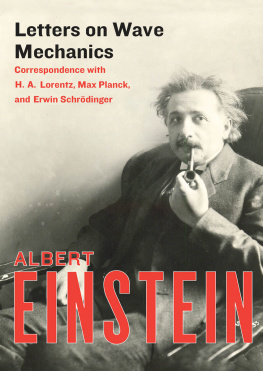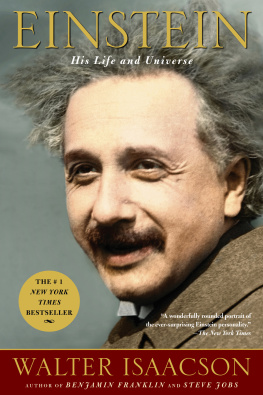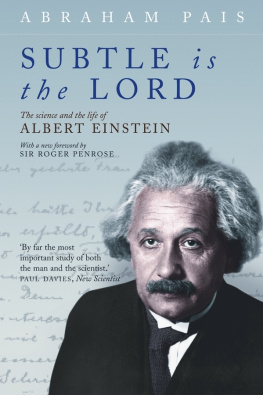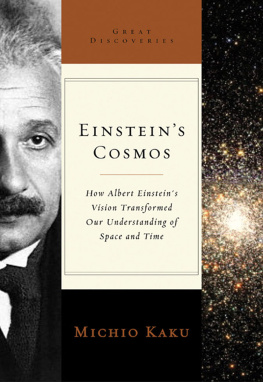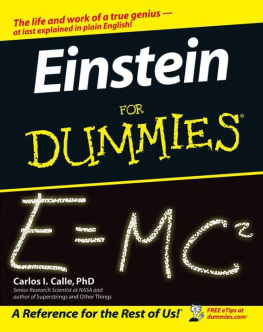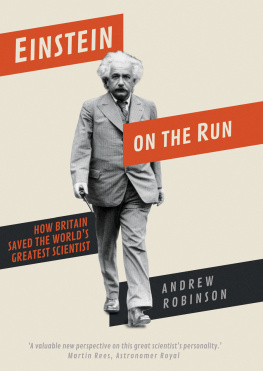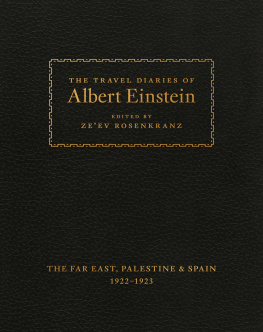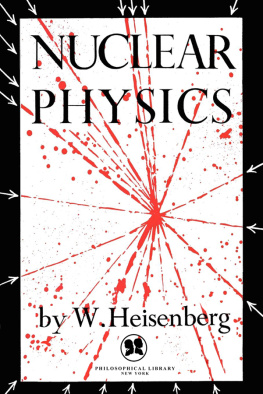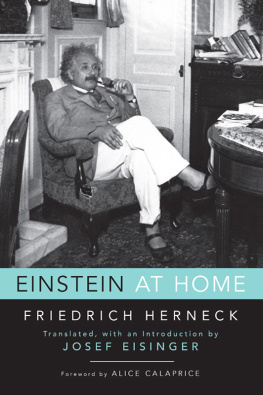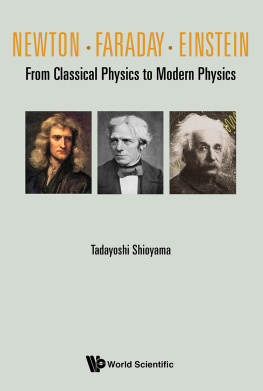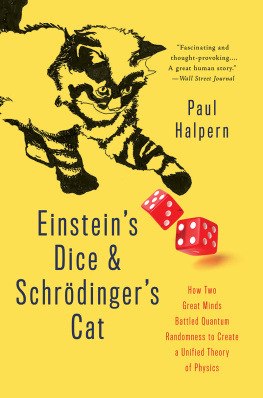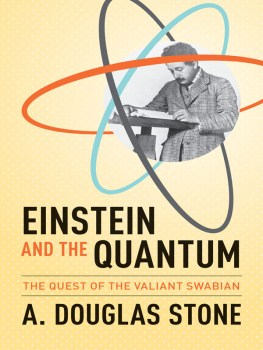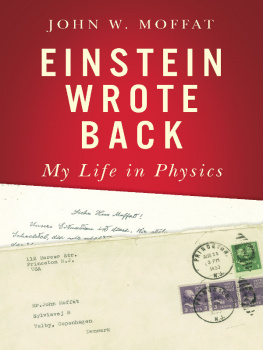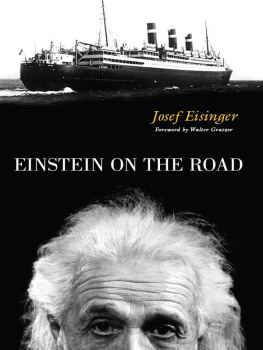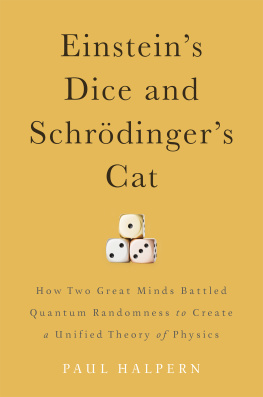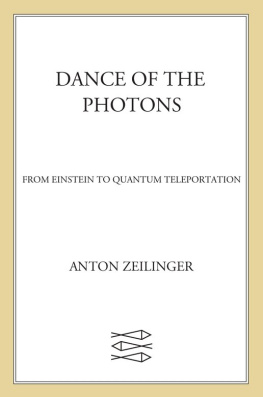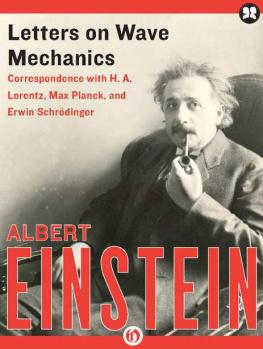BerlinGrunewald
2 April 1926
Dear Colleague,
Many thanks for the reprint. I read your article Can it still be changed?
Yours,
Planck
22 April 1926
Dear Colleague,
I have just seen from your first article that you really based your considerations on the equation
div grad + constant (E) = 0
which satisfies the addition theorem for independent systems. So my letter was superfluous.
I see no basic difference between your work on the theory of the [ideal] gas and my own. For according to you, too, the state (of equal probability) is characterized by the values of the set of numbers n1, n2, n3, , where the numbers n1, n2, etc. have the same meaning as they do for me.
I do not understand how you are allowed to use the last form of (4), in your article, since this is not consistent with the condition n4 = const.
Best wishes from
A. Einstein
Zrich
23 April 1926
My dear Professor,
My hearty thanks for your extremely kind letter of the 16th. Your approval and Plancks mean more to me than that of half the world. Besides, the whole thing would certainly not have originated yet, and perhaps never would have, (I mean, not from me), if I had not had the importance of de Broglies ideas really brought home to me by your second paper on gas degeneracy.
The objection in your last letter makes me even happier. It is based on an error in memory. The equation

is not mine, as a matter of fact, but my equation really runs exactly like the one that you constructed free hand from the two requirements of the additivity of the quantum levels and the non-appearance of the absolute value of the energy:

Your very basic requirements are therefore fulfilled. I am, moreover, very grateful for this error in memory because it was through your remark that I first became consciously aware of an important property of the formal apparatus. Besides, ones confidence in a formulation always increases if oneand especially if youconstruct the same thing afresh from a few fundamental requirements.
Just recently I read with the greatest interest your proposal in Naturwissenschaften for a new coherence experiment. I have not yet finished thinking it over. That always takes me rather long. I am not completely sure how you conceive of the arrangement behind the grating. (Behind the grating the light will be made parallel by means of another lens ) I imagine the wire grating at the focus of this farther lens and then perhaps a Fabry-Perot interferometer (plane parallel layer of air, rings of equal inclination). Then one would usually say: each point of the light source corresponds to a point of the circular image. The grating is the light source. Then the light beams from different slits of the grating would really not interfere with one another. But, according to the classical theory, we have here the unique situation that different points of the light source vibrate coherently in a legitimate way. I have not yet made clear to myself how that works out. But maybe the arrangement, as I continue to think about it, is also stupid.
I very much enjoyed your delightful explanation of the formation of meanders. a few days earlier, but I did not know a rational explanation. She says that she will never stir her tea again without thinking of you.
Kindest regards from
Yours faithfully,
E. Schrdinger
26 April 1926
Dear Colleague,
Many thanks for your letter. I am convinced that you have made a decisive advance with your formulation of the quantum condition, just as I am equally convinced that the Heisenberg-Born route is off the track. The same condition of system additivity is not satisfied in their method.
I have now discovered considerations that nearly rule out the existence of elementary spherical waves, so that I am pretty well convinced that the experiment I proposed will turn out negatively. Its simplest realization is, in principle:

A direction of emission R corresponds to a point in the focal plane of the telescope. Rays emitted in the direction R by a particle reach, or do not reach, the telescope (alternately); for a suitable relationship between the particle velocity and the path difference the interference would have to be destroyed, which, however, I do not believe. Diffraction at the grating acts as a disturbance, but not so strongly as to destroy the demonstrative power of the experiment.
Friendly greetings.
A. Einstein

Cunostrasse 44
BerlinGrunewald
30 May 1928
My dear Professor Einstein,
Enclosed is a letter from Niels Bohr who, at the end, expresses the wish that you and Planck might also be made aware of its contents. I also enclose the carbon copy of my letter just so that you can see what set off the discussion. The remark about the uncertainty relation in the ideal gas runs as follows, when worked out: if we quantize a molecule that is reflected back and forth on the segment l , then we have

Neighboring quantized values of the momentum therefore differ from each other by so little, (namely by only h\2l), that even with the largest possible uncertainty in the coordinate (x = l), I cannot buy enough accuracy in the momentum to allow me to distinguish between neighboring quantum states. What Bohr says about this case at the end of the third page, I do not understand at all.
If it is agreeable to you, I would be glad to come over sometime to talk about the letter, but perhaps you do not have much time now, before your departure, and you need to be sparing with it.
With greetings and best regards to the whole family,
Yours sincerely,
Schrdinger
_______________
Everything that I have just said is surely terribly trivial!
31 May 1928
Dear Schrdinger,
I think that you have hit the nail on the head. It is true that the evasion using the arbitrarily large domain of cyclic variables to limit the value of p is very ingenious. tranquilizing philosophyor religion?is so delicately contrived that, for the time being, it provides a gentle pillow for the true believer from which he cannot very easily be aroused. So let him lie there.
But this religion has so damned little effect on me that, in spite of everything, I say
not: E and
but rather: E or ;
and indeed: not , but rather E (it is ultimately real). But I cannot make head or tail of it mathematically. My brain is also too worn out by this time. If you would give me the pleasure of a visit from you again sometime it would be good of you and very fine for me.
Best regards from
A. Einstein
7, Sentier des Lapins
LaPanne, Belgium
19 July 1939
Dear Einstein,
.......
A few months ago a Dutch newspaper carried a report which sounded comparatively intelligent that you have discovered something important about the connection between gravitation and matter waves. I would be terribly interested in that because I have really believed for a long time that the -waves are to be identified with waves representing disturbances of the gravitational potential; not, of course, with those you studied first, but rather with ones that transport real mass, i.e. a non-vanishing Tik. That is, I believe that one has to introduce matter into the abstract general theory of relativity, which contains the Tik only as asylum ignorantiae (to use your own expression), not as mass points or something like that, but rather, shall we say, as quantized gravitational waves. I have done a good many calculations on this point but have found out very little, except that 13.7 of Eddingtons book Protons and Electrons, which had fascinated me very much, is false. But it is unfortunately not very hard to find major errors in this ingenious book.
Next page
